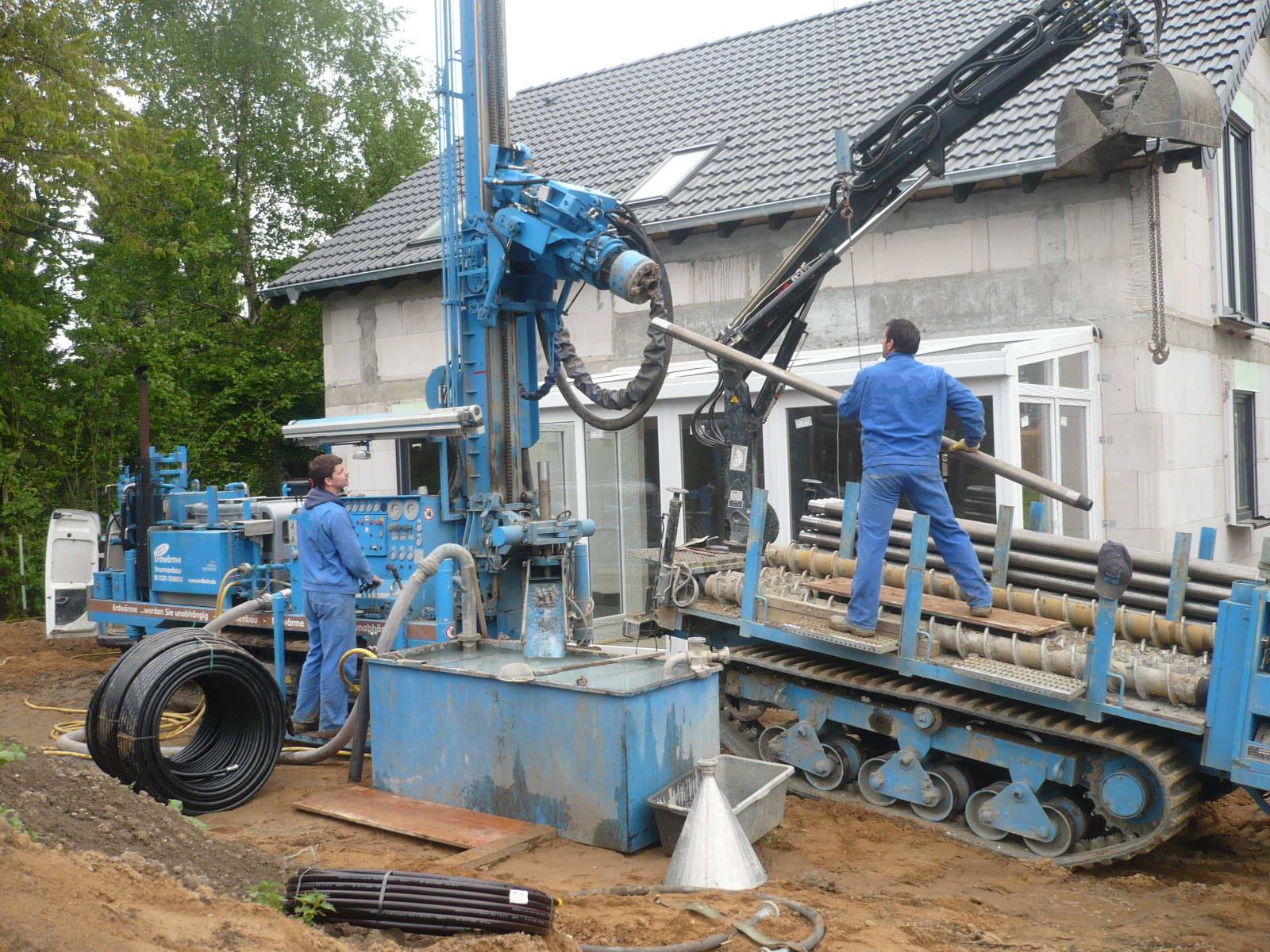downhole heat exchanger on:
[Wikipedia]
[Google]
[Amazon]


 A downhole heat exchanger, (DHE) also called a borehole heat exchanger, (BHE) is a
A downhole heat exchanger, (DHE) also called a borehole heat exchanger, (BHE) is a
Installation of a downhole heat exchanger
*John W. Lund:
The use of downhole heat exchangers (2003)
'

 A downhole heat exchanger, (DHE) also called a borehole heat exchanger, (BHE) is a
A downhole heat exchanger, (DHE) also called a borehole heat exchanger, (BHE) is a heat exchanger
A heat exchanger is a system used to transfer heat between a source and a working fluid. Heat exchangers are used in both cooling and heating processes. The fluids may be separated by a solid wall to prevent mixing or they may be in direct conta ...
installed inside a vertical or inclined borehole
A borehole is a narrow shaft bored in the ground, either vertically or horizontally. A borehole may be constructed for many different purposes, including the extraction of water ( drilled water well and tube well), other liquids (such as petrol ...
. It is used to capture or dissipate heat to or from the ground. DHT's are used for geothermal heating
Geothermal heating is the direct use of geothermal energy for some heating applications. Humans have taken advantage of geothermal heat this way since the Paleolithic era. Approximately seventy countries made direct use of a total of 270 PJ of ...
, sometimes with the help of a geothermal heat pump
A ground source heat pump (also geothermal heat pump) is a heating/cooling system for buildings that uses a type of heat pump to transfer heat to or from the ground, taking advantage of the relative constancy of temperatures of the earth through ...
. Downhole heat exchangers, like other use of geothermal energy, have the potential to significantly contribute to the reduction of emissions. In northern Europe, DHE are already widely deployed.https://www.mbie.govt.nz/assets/14861fe5a3/geothermal-barriers-update-1.pdf
Types
U-tube
The heat exchanger usually consists of one or two u-tubes through which the carrier fluid, usually water, circulates. The space around the u-tubes is filled with groundwater or backfilled with thermally conductive grout.Open pipe
Another design uses a single open pipe to flow water downward. The water then returns through the annular gap between the pipe and the casing. This design provides better thermal contact than u-tubes, but risks contamination by groundwater. Since this involves practically no downhole equipment, these systems usually only go by the name of borehole heat exchangers (BHT).Standing column well
If no casing is installed and groundwater is permitted to charge the system, this arrangement is no longer a BHT, but rather a standing column well.External links
* Video documentationInstallation of a downhole heat exchanger
*John W. Lund:
The use of downhole heat exchangers (2003)
'
References
Heat exchangers {{Energy-stub